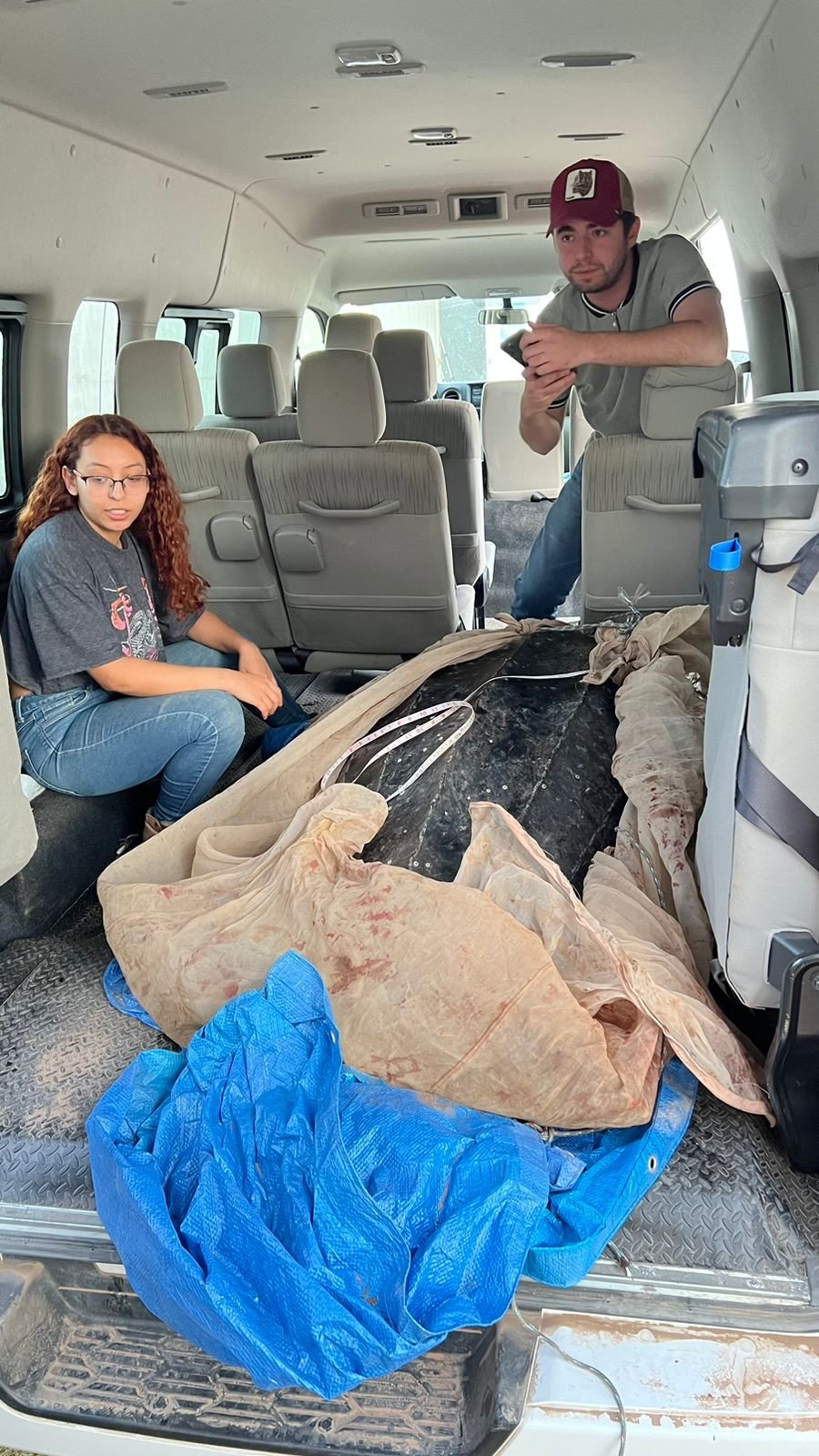When fisher Edmundo Rafael Garcias Burgos and his crew found a giant leatherback entangled in his nets, he immediately called his Uncle Mariano García Olivas for help. Edmundo and Mariano are fishers in Dautillos, Sinaloa, who have been trained by Dr. Alan Zavala Norzagaray to reduce and report sea turtle bycatch while out on the water. Bycatch occurs when fishing practices incidentally catch a non-target species in fishing gear, or an animal becomes entangled in abandoned or lost “ghost gear” drifting in the ocean.
“Sea turtle bycatch is not often reported because turtles can be sold on the informal market for more compensation than conservation provides, and yet they also pose a liability, as fines are steep for persons in possession of an endangered sea turtle,” explains Upwell Researcher Stephanie Rousso. As a result, liberating bycaught turtles and tracking rates of incidental capture and mortality is extremely difficult.
However, strong partnerships between researchers and fishers like the collaboration between Mariano and Dr. Zavala can change that. Mariano has been working with Dr. Zavala for over a decade, and during that time he was recognized as a “Leatherback Hero” by the Laud OPO Network and has brought other fishers in the community (like Edmundo) into the collaboration.
When Mariano received his nephew’s call, he went immediately to help disentangle the leatherback. They then called Dr. Zavala and the CIIDIR IPN Unidad Sinaloa Conservation Team and alerted them that there was a leatherback in need of help. While waiting for the Conservation Team to arrive, Mariano said he observed the leatherback and thought about how “Sea turtles are being attacked, sometimes intentionally, other times incidentally, but in any case, we (humans) are decimating them little by little, and for that reason, it left me with the desire to continue protecting them.”
Photo Caption: Graduate students Melani Robles y Fabián Bojórquez, students of the Wildlife Program at CIIDIR help transport the leatherback.
The turtle was transferred in a van to Lab Vida Silvestre y Enfermedades Emergentes of Ciidir Ipn Unidad Sinaloa for health assessment, treatment, and sample collection. It is important that a bycaught sea turtle receive a medical assessment before being released, otherwise injuries sustained while entangled could later cause its death. Dr. Zavala reflected on the fishers efforts, saying “The rescue of the turtle was very quick, it was reported immediately by the fishers and they managed it well because we had trained them and they are part of the Conservation Team. They knew the relevance of the information the turtle could generate, and they now know how to manage the turtle in a way that avoids stress and damage.”
Once the viability of the leatherback's health was confirmed, a satellite tag provided by Upwell was attached to its carapace to follow the turtle on its oceanic voyage. Edmundo and Mariano decided to name the turtle Liam Neythan, the names of Edmundo’s two children. Liam Neythan was released from Playa las Glorias and for the next two months the tracker transmitted data on the turtles’ migration south from Sinaloa. Mariano said that when seeing the satellite track updates, “There was a lot of emotion and joy on my part, on my nephew's part, and for all of us who watched Liam Neythan's journey.”
Upwell Executive Director Dr. George Shillinger stated “The combined efforts of the fishers and researchers turned what could have been a tragedy into a unique opportunity to tag an adult leatherback that was not at a nesting beach, which is a very rare occurrence, and Upwell was glad to contribute.” He added, “The data from Liam Neythan’s track will inform our ongoing efforts to refine the South Pacific Turtle Watch tool and to implement related fisheries bycatch risk mitigation initiatives.”
In September, 2023, fishermen from Sinaloa, including Edmundo and Mariano were recognized for their voluntary efforts to rescue and report leatherbacks accidentally entangled in shark drift nets over the past few years. Dr. Zavala recognized the fishermen, who he trained, at the annual Sinaloa Sea Turtle Network meeting.
From left to right: Edmundo Rafael Garcias Burgos, Ivette Astorga, Mariano García Olivas, Maestra Raquel Briseño, Abelino Angulo, Adalberto García, Dr. Alan Zavala Norzagaray
““The fishermen are the stewards of the area, they have the experience and traditional knowledge of the places with the greatest abundance of turtles, as well as the seasons in which they arrive in the area and are at risk for interactions with fisheries. Collaborating with them is the best way to obtain information and learn from their experiences, and in this way be able to conserve sea turtles.” ”
Mariano’s relationship with Dr. Zavala is one part of a larger network of fishers and researchers working together throughout the Gulf of California. Through these partnerships fishers can play a key role in both research and conservation efforts for sea turtles. Here at Upwell, we are so grateful for their efforts and look forward to future collaborations with them to protect turtles at sea.



